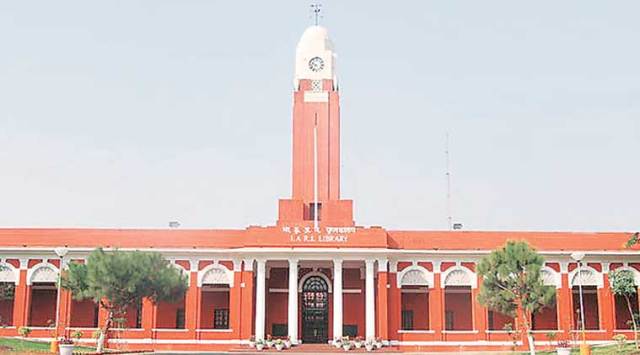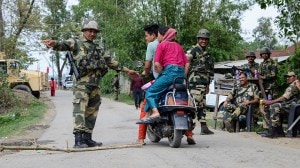- India
- International
Nandurbar among 11 districts highly vulnerable to extreme weather events, droughts: Study
The study also found that 37 per cent of the state’s agricultural area, spread over 14 districts, were moderately vulnerable.
 Indian Agricultural Research Institute (Express photo)
Indian Agricultural Research Institute (Express photo)Elever of the 36 districts in the state are highly vulnerable to extreme weather events, droughts and dwindling water security, a study by the Indian Council of Agricultural Research (ICAR) and the National Dairy Research Institute (NDRI) has found. These 11 districts also account for almost 40 per cent of the cropped area spread across Central Maharashtra, it said.
The study, ‘Socio-economic vulnerability to climate change – Index development and mapping for districts in Maharashtra’, released Friday revealed that extreme climate conditions highly affect the livelihoods and agrarian economy of Maharashtra. It has also found that 37 per cent of the state’s agricultural area, spread over 14 districts, were moderately vulnerable.
Among the 36 districts, the tribal-dominated district Nandurbar in north Maharashtra was found to be the most vulnerable to cyclones, floods, droughts, changing rainfall patterns and extreme temperatures affecting its crop production. The district was among the three others this year that recorded deficient rainfall in July. It also recorded the highest negative rainfall departure after receiving half its normal rainfall in July.
A spate of rainfall and floods last month had destroyed over 2.5 lakh hectares of crop area in the state. Crops like maize, soybean, groundnut vegetables, paddy and sugarcane suffered major losses.
“Mapping of districts shows that there is an instant need for focused policy efforts to address the socio-economic vulnerability in Central Maharashtra Plateau Zone, Scarcity Zone (Dhule, part of Nandurbar and Aurangabad), and Eastern Vidarbha Zone,” Chaitanya Adhav of ICAR-National Dairy Research Institute (NDRI), in Karnal, Haryana, who conducted the study with the support of R Sendhil from ICAR-Indian Institute of Wheat and Barley Research, said.

Other highly vulnerable districts include Buldhana, Beed, Jalna, Aurangabad, Hingoli, Parbhani, Nanded, Akola, Amravati, Washim.
The study also lists 14 districts as moderately vulnerable. These include Dhule, Jalgaon, Ratnagiri, Sindhudurg, Sangli, Solapur, Osmanabad, Latur, Yavatmal, Wardha, Chandrapur, Bhandara, Gondia and Gadchiroli.
The dominant crops from these districts are expected to bear the brunt of the climate crisis, the researchers said. Farming of jowar (sorghum), rice, wheat, sugarcane, cotton, ragi (finger millet), cashew nut, barley, and millets could get adversely affected in future, they warned.
According to the study, field demonstration to farmers and information dissemination through early warning systems was a must strategy to address these climate impacts that needs to be initiated at the village level.
Apr 27: Latest News
- 01
- 02
- 03
- 04
- 05































